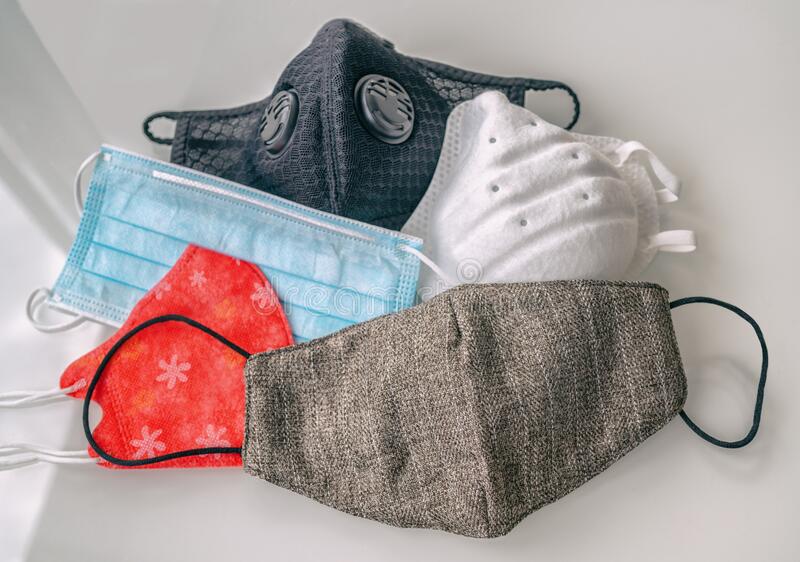Mask up!
Here a variety of masks are shown. These include a regular cloth masks, a N95 mask, a ventilated mask, and a surgical mask.
December 1, 2020
While taking preventative measures such as regularly washing your hands, social distancing, and monitoring your health daily are effective ways of preventing the contraction of COVID-19, face masks and face coverings prove to be one of the most effective preventive measures.
You might see HHS students and teachers wearing a variety of masks. Some make light of a difficult situation by wearing bright, colorful masks, others wear masks that match their personalities. Lastly, some wear everyday masks, but studies have shown that some variations prove to be more effective than others at slowing down COVID-19. But there is one common denominator in all masks, they all need to cover the nose and mouth.
N95 masks are among the most effective variations of face masks out there protecting and filtering against 95% of all particles, but they’re strictly reserved for healthcare workers and first responders.
Disposable surgical masks are effective in filtering and fighting against COVID-19. Filtering around 60% of respiratory particles, but it is recommended for these masks should be disposed of regularly.
CNN recommends wearing a tightly woven cloth mask made out of 100% cotton with at least two layers of fabric. It is recommended to wash your fabric masks everyday to get rid of bacteria and respiratory droplets.
According to Johns Hopkins Medicine, it advised that neck gaiters, bandanas, and masks with valves aren’t as effective as proper masks. Bandanas aren’t as effective because of an opening around the chin that leaves the area exposed. Neck gaiters are usually made with a material too thin to provide any protection from the virus and when you wear masks with valves, you risk infecting others. However, some students prefer this variation because it’s easier to use.
“I like it because it’s easier to breathe in, it covers my face, and I don’t have to constantly adjust it throughout the day,” Sophomore Brandon Sluka said.
Face shields are amongst the least recommended variation because it puts yourself and others in risk, as stated by the CDC. Face shields only protect a limited part of your face, leaving various areas exposed. Due to the insufficient amount of protection/isolation, you run the risk of contracting the virus and/or infecting others.
“As an English teacher, I talk a great deal and I found that it was easier for my students to hear me and was less uncomfortable wearing a shield instead of a mask all day,” Ms. Brooke Barfield, ELA teacher. She also elaborated on a disadvantage that she encountered. “The shield is better in my case, but it does have a few drawbacks. It adds another layer of glare which added to doing Zooms and staring at screens all day makes my eyes hurt at the end of the day,” she added.
Evidently, students have found normalcy wearing face masks and suggest that it now has become a daily habit.
“I’ve gotten used to wearing masks at this point. They feel normal on my face and it’s basically another accessory that is just necessary to wear everyday,” Sophomore DeAnna Haynes-McGinnist said.
Whichever mask you choose, make sure it is comfortable and durable. It has been indicated by WWLP, that we’ll have to continue wearing masks even after a vaccination is available to establish substantial populations immune to COVID-19.


